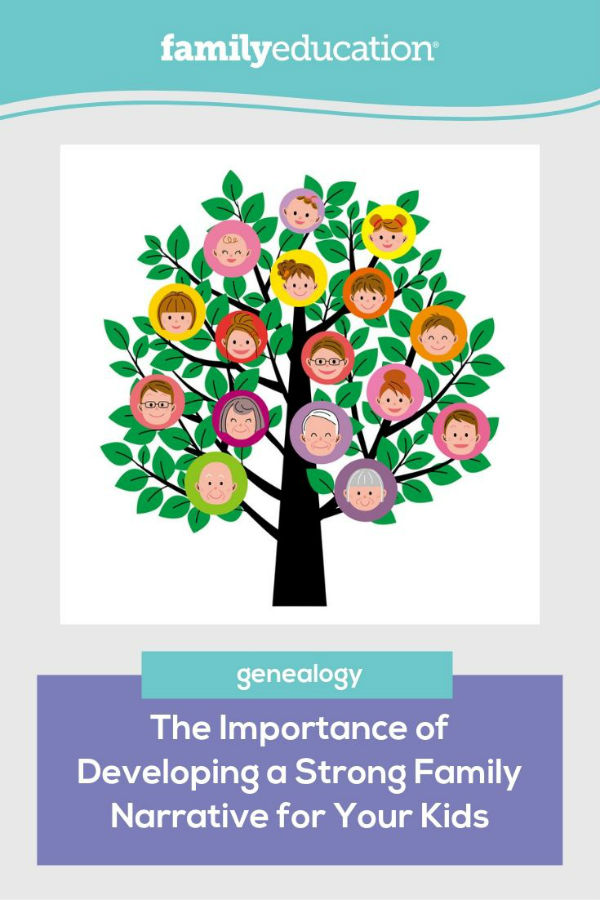The Importance of Developing a Strong Family Narrative for Your Kids

As parents, we want our children to have it all. We bend over backwards researching the best of everything, feeding them healthy foods, shuttling them to activities; yet for many of us, we stop short of truly providing our kids with it all as we forget to incorporate a strong family narrative into their lives. It’s so easy to be future-minded as we focus on important aspects of our children’s lives like education and health that we can neglect the value of bringing the past into the present.
More: How to Choose a Baby Name Inspired by Your Family Tree
All children need to know that they are part of a narrative bigger than themselves. Whether it’s good, bad, or somewhere in between, the stories of our families and our heritage provide kids with a sense of belonging, and even more than that, a kind of resiliency that could be one of the best gifts we could possibly provide to them. As shared in this New York Times article, “The more children knew about their family’s history, the stronger their sense of control over their lives, the higher their self-esteem and the more successfully they believed their families functioned.” It’s amazing that we can impact the emotional health and happiness of our children so much just by sharing the stories and truths of where our families came from.
Don't have time to read now? Pin it for later.

How do you go about sharing your family history and narrative with children?
Sharing a family narrative with your children does not have to be a big download of information. It can be casual, fun, and spontaneous. When there is a funny moment in the course of your day, share a funny memory from your childhood. If you’re talking seriously with your child about a challenge or problem she is facing, share a difficulty experienced in past generations of your family and let them know that they are not alone. Use the routine of bedtime stories to share memories from your past or stories that have been passed down to you. Play a game of “Did You Know?” and share small details about your childhood or the lives of a relative. There’s no wrong way to do this as long as we keep sharing.
How much do you explain and should you hide aspects of your family narrative?
You can explain however much you would like to your children, but you don’t need to hide the difficulties. The important part is that your child feels an intergenerational connection. It’s also all about how you frame family stories. Be sure to connect the stories of the past to larger, encouraging themes. This is an excellent example as shared in The Stories That Bind Us:
“‘Dear, let me tell you, we’ve had ups and downs in our family. We built a family business. Your grandfather was a pillar of the community. Your mother was on the board of the hospital. But we also had setbacks.You had an uncle who was once arrested. We had a house burn down.Your father lost a job. But no matter what happened, we always stuck together as a family.’”
Talking about how family members connect to each other and family relationships is also an opportunity to introduce the concept of genetics to children. As Dana Bressette, a genetics scientist and teacher explained, “This would be a great time to explain genetics to children (in an age-appropriate way). A simple lesson, say, explaining why some of the people in the family have blue eyes and some have brown eyes, could help kids understand the basics of genetics and help develop their understanding of how they connect to members of their family.” You might even consider using these conversations as an opportunity to do a fun STEAM activity like DNA Gene Bracelets.
How do you reinforce the family narrative?
Working together as a family to form a family mission statement is one way to reinforce a strong family narrative. This statement can recognize where your family has come from, what your family values are, and how they connect to your hopes for the future. This can be written and expressed in simple and kid-friendly language and would be a wonderful addition to the family bulletin board or refrigerator door.
You could also reinforce the strong family narrative by creating a family tree together. Rather than focusing on how far reaching you can make your tree as traditional family trees often do, you can keep it simple. Each level of the tree could be a place where you attach sticky notes or colorful pinned cards that share a few details from family stories or memories that you’ve discussed or learned together. This could become a fun intergenerational activity if you reach out to grandparents and other relatives asking them to share memories as well.
Remember, there’s no detail too small and any size family will do. It only takes two people to form a family, and even if it’s simply stories of your favorite ice cream parlor as a child or a time that you were nervous in school or the birth story of your child, they all work toward accomplishing the main goal. Your child will feel connected to something bigger than herself. She will feel resilient, and her intergenerational self will be nurtured.
Does your family narrative include complicated topics like 9/11? Here’s how to talk to your kids about it.

